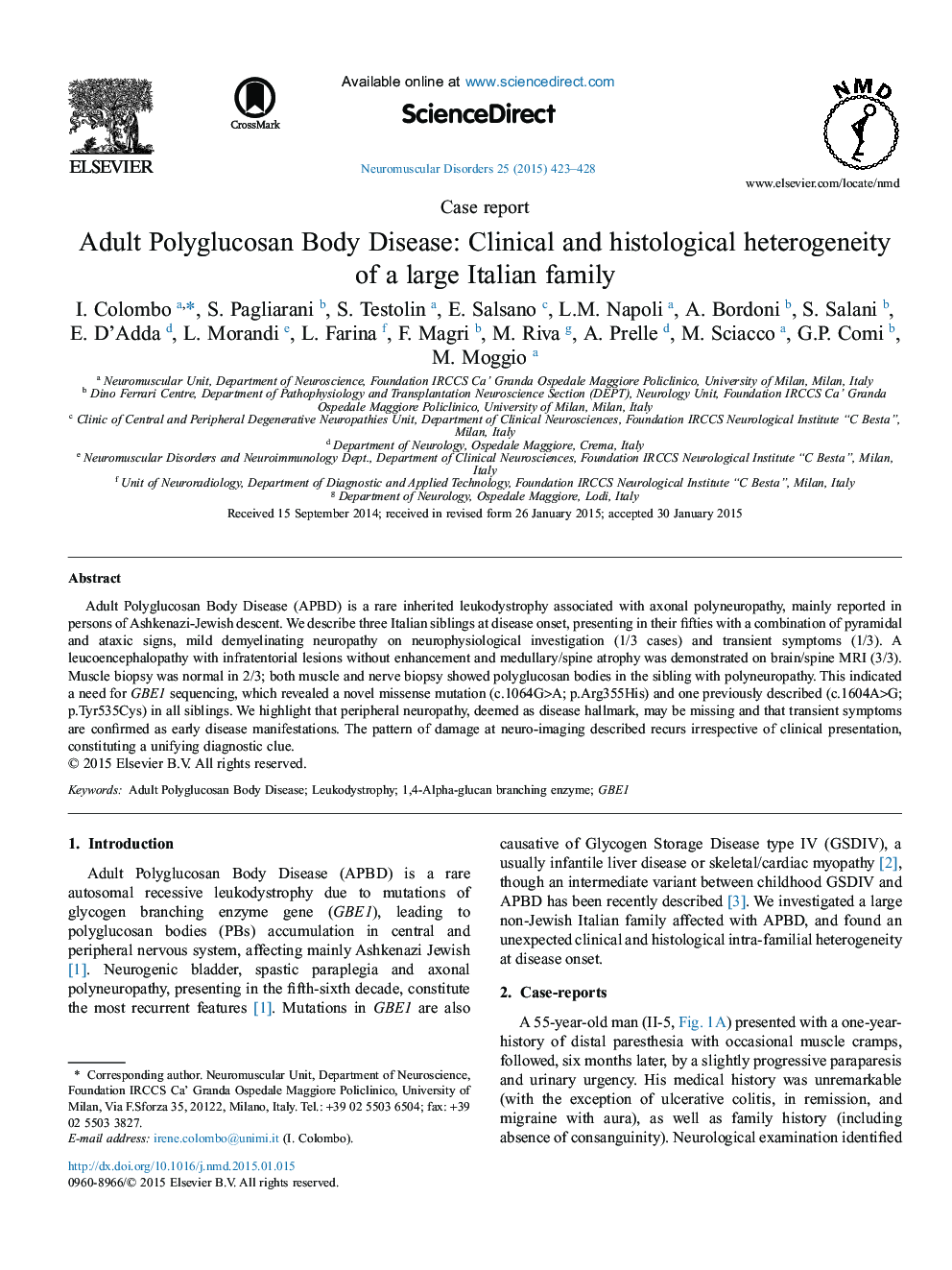| Article ID | Journal | Published Year | Pages | File Type |
|---|---|---|---|---|
| 3079097 | Neuromuscular Disorders | 2015 | 6 Pages |
•We report a large non-Jewish Italian family affected with APBD.•Clinical and histological heterogeneity was observed at disease onset.•Peripheral neuropathy, previously deemed as disease a hallmark, may be missing.•Transient symptoms are confirmed to be an early disease manifestation.•The typical leucodystrophy pattern of APBD recurs irrespectively to phenotype.
Adult Polyglucosan Body Disease (APBD) is a rare inherited leukodystrophy associated with axonal polyneuropathy, mainly reported in persons of Ashkenazi-Jewish descent. We describe three Italian siblings at disease onset, presenting in their fifties with a combination of pyramidal and ataxic signs, mild demyelinating neuropathy on neurophysiological investigation (1/3 cases) and transient symptoms (1/3). A leucoencephalopathy with infratentorial lesions without enhancement and medullary/spine atrophy was demonstrated on brain/spine MRI (3/3). Muscle biopsy was normal in 2/3; both muscle and nerve biopsy showed polyglucosan bodies in the sibling with polyneuropathy. This indicated a need for GBE1 sequencing, which revealed a novel missense mutation (c.1064G>A; p.Arg355His) and one previously described (c.1604A>G; p.Tyr535Cys) in all siblings. We highlight that peripheral neuropathy, deemed as disease hallmark, may be missing and that transient symptoms are confirmed as early disease manifestations. The pattern of damage at neuro-imaging described recurs irrespective of clinical presentation, constituting a unifying diagnostic clue.
